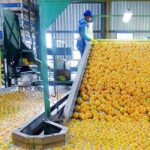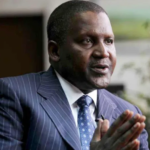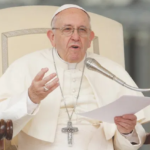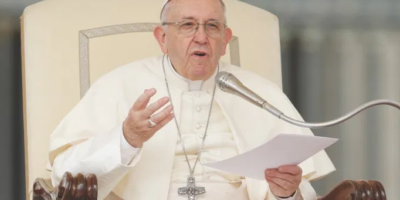United States Continues To Lead Global Response To COVID-19

New foreign assistance funding commitments continue to bolster the unparalleled global leadership of the United States in response to COVID-19. The US Government has allocated $20.5 billion to benefit the international response, including commitments for the development of vaccines and therapeutics, preparedness efforts, and foreign assistance.
We continue to ensure that the substantial US funding and scientific efforts on this front remain a central and coordinated part of the worldwide effort against this deadly virus.
Importantly, our global efforts in the face of COVID-19 build upon decades of US investment in life-saving health and humanitarian assistance. We are achieving real results, helping nations around the world respond to COVID-19 and thereby protecting the homeland.
Since the outbreak of COVID-19, the USG has announced more than $1.5 billion in State Department and US Agency for International Development (USAID) emergency health, humanitarian, economic, and development assistance specifically aimed at helping governments, international organisations, and non-governmental organisations (NGOs) fight the pandemic.
This funding, provided by U.S. taxpayers, will save lives by improving public health education; protecting healthcare facilities; and increasing laboratory, disease-surveillance, and rapid-response capacity in more than 120 countries.
The United States has mobilised as a nation to make this an impressive global effort. Working with the private sector, we are actively fulfilling President Trump’s commitment to provide ventilators to our partners and allies in Africa, Asia, Europe, and Latin America.
Our foreign assistance funding to date for the response to the COVID-19 pandemic now includes more than $250 million specifically for ventilators. The COVID-19 assistance to-date from the State Department and USAID includes the following:
More than $490 million in emergency health assistance from USAID’s Global Health Emergency Reserve Fund for Contagious Infectious-Disease Outbreaks and Global Health Programs account.
These funds prioritise interventions to mitigate the pandemic and prepare communities in developing countries affected by and at-risk of COVID-19.
This includes funding for ventilators – highly specialised, state-of the art medical equipment used in hospitals and other medical facilities to help support patients who are having trouble breathing.
These life-saving devices are compact and will give recipient countries flexibility in treating patients most seriously affected by advanced COVID-19 symptoms easily and quickly throughout the country.
As an added benefit, the ventilators can also be used to treat patients for other respiratory ailments beyond the virus for years to come.
A total of more than $875 million in humanitarian assistance overall, through International Disaster Assistance and Migration and Refugee Assistance, including:
$558 million in humanitarian assistance from USAID’s International Disaster Assistance (IDA) account.
This assistance, provided through USAID’s Bureau of Humanitarian Assistance, supports case-management and keeps essential health care operating; provides risk-communication and community-engagement programs; supports efforts to prevent and control infections; provides safe water and hygiene items; provides emergency food assistance; and strengthens local capacity and coordination by working with existing health structures and with others in the humanitarian community.
These funds prioritise populations affected by ongoing humanitarian crises, particularly internally-displaced people (IDPs) and other displaced persons, because of their heightened vulnerability, the elevated risk of severe outbreaks in camps and informal settlements, and anticipated disproportionate mortality in these populations.
More than $317 million in humanitarian assistance from the Migration and Refugee Assistance (MRA) account, provided through the State Department’s Bureau of Population, Refugees, and Migration.
These funds help international organizations and NGO partners address the increased vulnerability created by the pandemic of refugees and host communities as well as among migrants and other vulnerable and conflict-affected people.
This includes strengthening local health responses and provision of emergency relief items to vulnerable families.
More than $208 million from the Economic Support Fund (ESF). These funds promote American foreign-policy interests by financing shorter-term mitigation efforts and addressing the second-order impacts of the pandemic in the long term, across a variety of sectors. ESF funding is also being used to provide ventilators.
This new COVID-19 foreign assistance is provided in addition to the more than $100 billion in global health funding and nearly $70 billion in overseas humanitarian assistance provided by the United States in the last decade alone.
These new amounts do not include assistance being provided by other USG Departments and Agencies, including the Centres for Disease Control and Prevention (CDC) within the U.S. Department of Health and Human Services (HHS) and the Department of Defence (DoD).
In addition to this direct funding from the US Government, our All-of-America approach is helping people around the world to confront the ongoing pandemic.
Through the generosity of American private businesses, non-profit groups, charitable organisations, faith-based organisations, and individuals, Americans have now provided more than $4.9 billion in donations and assistance globally for COVID-19 response, more than any other nation.
To meet the most urgent needs, the US Government Departments and Agencies are coordinating efforts to prioritise foreign assistance to maximise the potential for impact. The United States is providing the following assistance through the State Department and USAID:
Ethiopia: $51.3 million in assistance to counter COVID-19, including $27.4 million in IDA humanitarian assistance for risk-communications, the prevention and control of infections in health facilities, disease-surveillance, contact-tracing, coordination, and emergency food assistance; more than $13.5 million in MRA humanitarian assistance for vulnerable people, including refugees, migrants, and host communities; and more. This assistance is in addition to the United States’ long-term investments in Ethiopia over the past 20 years of more than $13 billion, nearly $4 billion of which was for health.
Ghana: $1.6 million in health assistance to address the outbreak by strengthening outbreak-response capabilities, including community-based surveillance for case-finding and contact-tracing; improve laboratory diagnostic capacity; optimise the management of COVID-19 cases and the prevention and control of infections in health facilities; and promote risk-communications and community-engagement activities. This assistance builds upon $3.8 billion in total U.S. Government investments in Ghana over the last 20 years, including nearly $914 million for health.
Kenya: Nearly $16.3 million for health and humanitarian assistance, including $13.5 million in health and IDA humanitarian assistance to provide emergency food assistance; bolster risk-communications; prepare health-communication networks and media for possible cases; and help provide public-health messaging for media, health workers, and communities; and more than $2.7 million in MRA humanitarian assistance for refugees and host communities. This assistance specific to COVID-19 comes on top of long-term U.S. Government investments in Kenya, which total $11.7 billion over the last 20 years, including more than $6.7 billion for health.
Niger: Nearly $12.1 million in assistance includes $750,000 for health assistance and $8 million in IDA humanitarian assistance for risk-communications, the prevention and control of infectious diseases in health facilities, emergency food assistance, and coordination; and more than $3.3 million in MRA humanitarian assistance will support vulnerable people in Niger during the pandemic, including refugees, vulnerable migrants, and host communities. This assistance comes on top of more than $2 billion in total U.S. Government investments for Niger in the past 20 years, nearly $233 million for health.
Nigeria: More than $41.3 million in assistance, which includes more than $3.3 million for health assistance and $34 million in IDA humanitarian funding for risk-communications, water and sanitation, infection-prevention, coordination, and emergency food assistance; and nearly $4.1 million in MRA humanitarian assistance for vulnerable people. This assistance joins more than $8.1 billion in total assistance for Nigeria over the past 20 years, including more than $5.2 billion for health.
Somalia: More than $23 million in humanitarian assistance for the response to COVID-19 will fund risk-communications, the prevention and control of infectious diseases in health facilities, case-management, and more, including for internally displaced persons, refugees, returnees, and vulnerable migrants. This assistance comes in addition to $5.3 billion in total assistance for Somalia over the last 20 years, including nearly $30 million for health.
South Africa: Approximately $9.1 million in health assistance to counter COVID-19 will fund risk-communications, water and sanitation, the prevention and control of infections in health facilities, public health messaging, and more. The United States has also pledged to send up to 1,000 ventilators to South Africa, the first 50 of which arrived on May 11, 2020. This assistance joins more than $7 billion in total assistance by the United States for South Africa in the past 20 years, nearly $6 billion invested for health.
South Sudan: Nearly $46.9 million in assistance includes $35.2 million in IDA humanitarian assistance for case management, prevention and control of infections, logistics, coordination efforts, risk communications, water, sanitation and hygiene, and emergency food assistance; $2.8 million in health programming; and more than $8.9 million in MRA humanitarian assistance that will support refugees and host communities in South Sudan during the pandemic. The health assistance will fund expanded training of health workers and peer educators on proper practices to prevent and control infections in health facilities to protect communities and patients, particularly those at high risk or who are immunocompromised, and strengthening the capabilities of health facilities and communities to manage and refer cases of COVID-19. The health assistance also will fund expanding efforts to address community concerns, including by tracking and combating rumors, misconceptions, and grievances. This funding builds upon past U.S. investments in South Sudan that total $6.4 billion over the past 20 years, including more than $405 million for health.
Sudan: More than $38.8 million in assistance includes $1 million in health assistance and $28.8 million in IDA humanitarian assistance for strengthening laboratory capacity, disease surveillance and contact-tracing, case-management, risk-communications, disease-surveillance, the prevention and control of infections, water, sanitation and hygiene, and emergency food assistance; $5 million in ESF for cash assistance to vulnerable families adversely affected by COVID-19; and more than $4 million in MRA humanitarian assistance to support vulnerable people. The United States has invested more than $1.6 billion in total assistance for Sudan over the last 20 years, more than $3 million of which was for health.
The attention of the Debt Management Office (DMO), has been drawn to statements and reports credited to several persons on the subject of Loans obtained from China and has considered it necessary to provide a sequel to its Press Release on the same subject dated September 11, 2018.
The general public is encouraged to be guided by the facts in this Press Release.
How Much Loan has Nigeria Taken from China?
As at March 31, 2020, the total borrowing by Nigeria from China was USD3.121 billion (₦1,126.68 billion at USD/₦361).
This amount represents only 3.94% of Nigeria’s total public debt of USD79.303 billion (₦28,628.49 billion at USD/₦361) as at March 31, 2020.
Similarly, in terms of external sources of funds, Loans from China accounted for 11.28% of the External Debt Stock of USD27.67 billion at the same date.
These data, show that China is not a major source of funding for the Nigerian Government.
What are the Terms of the Loans from China?
The total borrowing from China of USD3.121 billion as at March 31, 2020, are concessional Loans with Interest Rates of 2.50% per annum with a tenor of 20 years and a grace period (moratorium) of seven years. The terms and other details of the loan are available at www.dmo.gov.ng.
These Terms are compliant with the provisions of Section 41(1a) of the Fiscal Responsibility Act, 2007.
In addition, the low interest rate reduces the interest cost to government while the long tenor enables the repayment of the principal sum of the Loans over many years.
These two benefits make the provisions for debt service in the annual budget lower than they would otherwise have been if the loans were on commercial terms.
What Were the Loans Used For?
The $3.121 billion loans are project-tied loans. The projects, 11 in number as at March 31, 2020, The projects include Nigerian Railway Modernization Project (Idu-Kaduna section), Abuja Light Rail Project, Nigerian Four Airport Terminals Expansion Project (Abuja, Kano, Lagos and Port Harcourt), Nigerian Railway Modernization Project (Lagos-Ibadan section) and Rehabilitation and Upgrading of Abuja – Keffi- Makurdi Road Project.
See a Full List of the Projects at www.dmo.gov.ng.
The impact of these loans is not only evident, but visible. For instance, the Idu – Kaduna Rail Line has become a major source of transportation between Abuja and Kaduna.
Also, the new International Airport in Abuja, has improved air transportation for the populace, while the Lagos – Ibadan rail line when completed, will ease traffic on the busy Lagos -Ibadan expressway.
The projects also have the added benefits of job creation, not only by themselves but through direct and indirect service providers, a number of which are Small and Medium Enterprises.
It is widely accepted that investment in infrastructure is one of the most effective tools for countries to achieve economic growth and development. Using Loans from China to finance infrastructure is thus in alignment with this position.
What Is the Process by which the Loans were obtained?
The principal process and requirements for borrowing by the Government are expressly stated in the Debt Management Office Establishment (ETC) Act, 2003 (DMO Act) and the Fiscal Responsibility Act, 2007.
Section 21 (1) of the DMO Act,
No External loan shall be approved or obtained by the Minister unless its terms and conditions shall have been laid before the National Assembly and approved by its resolution” and Section 41 (1a) of the FRA.
Government at all tiers shall only borrow for capital expenditure and human development, provided that, such borrowing shall be on concessional terms with low interest rate and with a reasonable long amortisation period subject to the approval of the appropriate legislative body where necessary,
are instructive in this regard.
To summarise, the Federal Ministry of Finance, Budget and National Planning works with the MDAs under whose portfolio a proposed loan falls and also with the DMO.
Thereafter, the approval of the Federal Executive Council (FEC) is sought. It is only after the approval by FEC that the Presiency Excellency requests for the approval of the National Assembly (NASS) as required by Section 41 of the Fiscal responsibility Act, 2007.
More importantly, it is only after the approval of NASS that the loans are taken and Nigeria begins to drawdown on the Loans. In summary, borrowing is a joint activity between the FEC and the NASS arms of government.
How Rigorous is the Loan Documentation?
The loan agreements are reviewed by legal officers of the Federal Ministry of Justice and the legal opinion of the Attorney General of the Federation and Minister of Justice is obtained before any External Loan Agreement is signed.
Can China Take Possession of the Projects Financed by them if Nigeria Defaults in the Servicing of the Loan?
Firstly, Nigeria explicitly provides for debt service on its external and domestic debt in its annual budgets. In effect, this means that Debt Service is recognised and payment is planned for.
In addition, a number of the projects being (and to be) financed by the loans are either revenue generating or have the potential to generate revenue.

Justin Nwosu is the founder and publisher of Flavision. His core interest is in writing unbiased news about Nigeria in particular and Africa in general. He’s a strong adherent of investigative journalism, with a bent on exposing corruption, abuse of power and societal ills.













